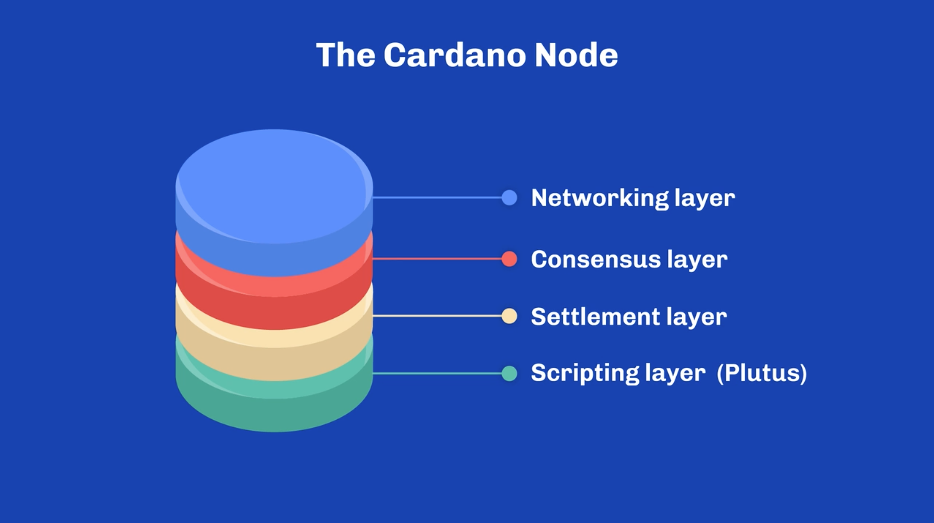The Cardano Node (not to be confused with “Cardano nodes“–the Cardano blockchain is powered by a flock of inter-connected nodes) is a core software component in the Cardano blockchain ecosystem, specifically the official implementation that powers the Cardano network. It is written in the Haskell programming language and is responsible for running the Cardano blockchain.

Key functions of the Cardano Node include:
- Blockchain Participation: The cardano-node allows users to participate in the blockchain by validating transactions, creating new blocks, and securing the network through its consensus protocol (Ouroboros, a proof-of-stake system).
- Operating a Stake Pool: The cardano-node is essential for running a stake pool, where users can delegate ADA (the native cryptocurrency of Cardano) to participate in staking and earn rewards.
- Full Node Operation: When running, the cardano-node maintains a full copy of the blockchain and continuously updates it by receiving new blocks and transactions from the network.
- Network Communication: It facilitates communication with other nodes (peer-to-peer) on the Cardano network, ensuring that transactions and blocks are propagated properly and that consensus is maintained.
- API Interaction: It provides an interface for developers and applications to interact with the Cardano blockchain by exposing APIs for querying the blockchain, submitting transactions, and other functions.
The Cardano Node is the software capable of running as a core block producer, as a relay or as a local entry-point to the network. The node itself is made out of several inter-connected component parts:
The settlement layer: a multi-era ledger implementation derived from a set of formal specifications. This is where the core Cardano entities are defined as well as the rules for using them. This is the bedrock on top of which all other components build upon.The consensus layer: an implementation of the consensus layer of the Ouroboros family of protocols. If you’ve heard about “The Hard-Fork Combinator“, this is where you can find it. For a high-level − albeit technical − introduction, have a look at The Abstract Nature of The Consensus Layer.The networking layer: a peer-to-peer networking stack geared towards Proof-of-Stake systems. This includes a framework for writing typed protocols with supports for pipelining, multiplexing and various protections against adversarial peers.The scripting layer: also known as Plutus, it is a scripting language embedded in the Cardano ledger to provide smart-contract capabilities to the network. At its core, it is a typed Lambda-Calculus which acts as low-level interpreted assembly code.
In summary, The Cardano Node is the foundational software that developers, stake pool operators, and full nodes use to interact with and maintain the Cardano blockchain network.date all transactions) or light nodes (that rely on full nodes for certain tasks).

Leave a Reply